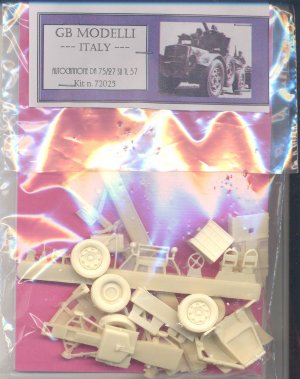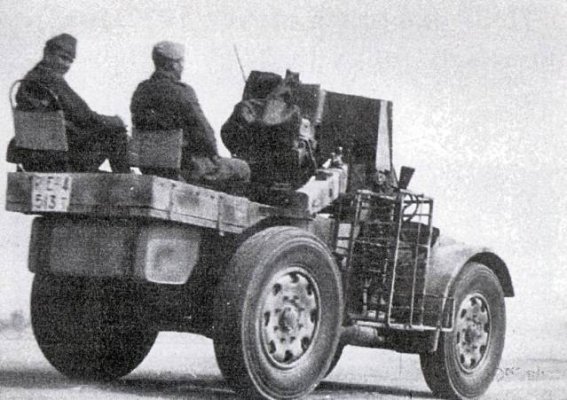|
GB Modelli
|
Autocannone da 75/27 su TL37 |
|||
Kit #: 75025 |
Review by
- Francesco Giovagnorio
|
|||
|
GB Modelli
|
Autocannone da 75/27 su TL37 |
|||
Kit #: 75025 |
Review by
- Francesco Giovagnorio
|
|||
 |
 |
A brief historical background The Autocannone da 75/27 su TL37 was built in 20-30 copies, after the outbreak of hostilities, in Libyan workshops of the 12º Autoraggruppamento AS (Africa Settentrionale), essentially in order to compensate for the shortage of self-propelled guns. It is a model Fiat-SPA TL37 Libia with the rear body modified to accommodate a 75/27 Gun Mod. 1911. The gun itself was the Vickers-Terni Italian version of the gun developed by French Lt.C. Deport in 1908: originally a field gun, it was much appreciated by the Italian army because of its effectiveness, sturdiness and manoeuvrability and also proved effective in anti-tank role; the gun was mounted without wheels, and the two trails of the original carriage were shortened and fixed to the chassis frame. The original shield was also redesigned and shortened, while the shooting angle was limited to the anterior sector. While moving, the barrel was lifted anteriorly between the driver and the gun captain; in some vehicles these two positions were protected by a front shield. Other modifications included an ammunition rack on the right side, repositioning the auxiliary tank under the rear chassis and mounting a spare wheel on the left side. Posteriorly two gun crew took place on two seats. The Autocannone da 75/27 su TL37 was assigned to the XVI Gruppo Autoportato del Raggruppamento Celere A.S. and, in 1942, to the 136º Reggimento Artiglieria Motorizzata della 136ª Divisione corazzata "Giovani Fascisti", who fought in Tunisia in 1943. |
|
References:
Thanks to Giorgio Briga (GB Modelli) for the review sample. |
Back to GB Modelli Kit List |
Back to Construction Reviews |
Article Last Updated: 13 February 2014 |
Back to Home Page |